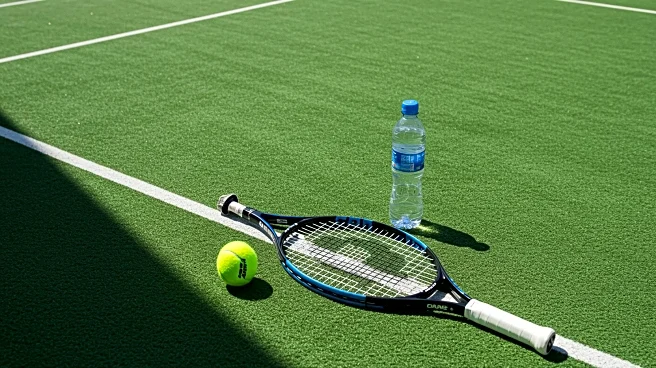What's Happening?
Arthur Rinderknech, a French tennis player, collapsed during his third-round match against Felix Auger-Aliassime at the Cincinnati Open due to sweltering heat conditions. Rinderknech had lost the first set 7-6 and was tied at 2-2 in the second set when he collapsed near the baseline. Auger-Aliassime and the umpire quickly attended to him before medical staff arrived. Despite a cooling break with ice packs, Rinderknech retired after two more games, allowing Auger-Aliassime to advance to the last 16. The tournament has seen players struggle with temperatures regularly exceeding 30°C, affecting performance and health.
Why It's Important?
The incident highlights the challenges athletes face in extreme weather conditions, raising concerns about player safety and the adequacy of current measures to protect them. The Cincinnati Open is not the first tournament to experience such issues; similar conditions were noted at Wimbledon and the Australian Open. The situation underscores the need for tennis organizers to reassess and possibly enhance protocols for heat management to prevent health risks. This could lead to changes in scheduling, player preparation, and tournament policies, impacting how future events are conducted.
What's Next?
Organizers may need to consider implementing more robust heat management strategies, such as extended cooling breaks or rescheduling matches during cooler parts of the day. The incident could prompt discussions among stakeholders, including players, coaches, and medical professionals, about improving safety standards. There may also be calls for revisiting the Australian Open Heat Stress Scale or developing similar measures for other tournaments to ensure player well-being.
Beyond the Headlines
The broader implications of extreme weather conditions in sports extend beyond tennis, affecting various outdoor activities and competitions. This raises ethical questions about the balance between competitive integrity and athlete health. Long-term, climate change may increase the frequency of such events, necessitating a reevaluation of sports management practices globally.













